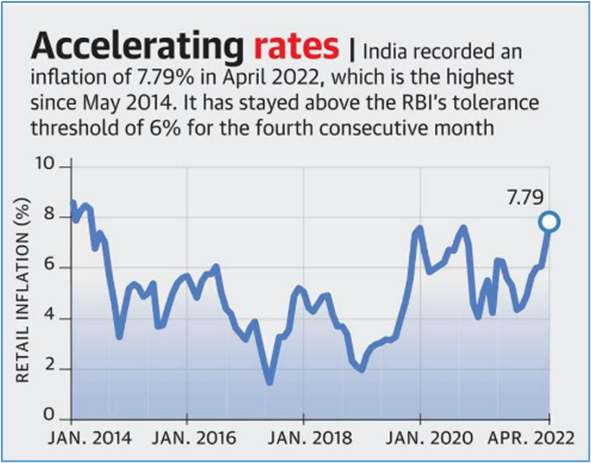Wednesday, 18th May 2022
Lancet report on pollution and health
In News
According to the latest Lancet Commission on pollution and health report, Pollution has led to more than 2.3 million premature deaths in India in 2019.
About the News
- The report has blamed pollution for about one in six - deaths globally while in India, bad air kills more than a million people every year which is highest in world.
- The findings have evaluated data from the Global Burden of Diseases, Injuries and Risk Factors Study 2019 (GBD) to show how pollution remains responsible for approximately nine million deaths per year.
What are the major findings of the report?
- Pollution led deaths: Overall, pollution was responsible for an estimated 90 lakh deaths in 2019 (equivalent to one in six deaths worldwide), a number that has remained unchanged since the 2015 analysis.
- Air pollution: Globally, air pollution alone contributes to 7 lakh deaths
- Water pollution: It was responsible for 1.4 million deaths.
- Lead pollution: It is responsible for nearly 900,000 premature deaths.
- Global distribution: The study found that more than 90% of pollution related deaths occurred in low-income and middle-income countries, with India topping the list with 2.36 million and China at number two with 2.1 million deaths.
- Components: Ambient air pollution was responsible for 45 lakh deaths, and hazardous chemical pollutants for 17 lakh, with 9 lakh deaths attributable to lead pollution.
Findings on India
- Air pollution: It was responsible for 8% of all deaths, which is the largest number of air-pollution-related deaths of any country.
- Different types: The majority of air pollution-related deaths in India were caused by PM2.5 pollution, and another by household air pollution.
- Factors: India has seen a decline in deaths from pollution sources associated with extreme poverty (such as indoor air pollution and water pollution) but these reductions are offset by increased deaths attributable to industrial pollution (such as ambient air pollution and chemical pollution).
- Poor adherence: With World Health Organization (WHO) tightening its health-based global air quality guidelines value for PM2.5 from 10 micrograms per cubic metre to 5, there is hardly any place in India which follows the WHO norms.
- Impact on GDP: Between 2000 and 2019, economic losses caused by modern forms of pollution - ambient, chemical and lead pollution - have increased and are now "conservatively estimated to amount to approximately 1% of GDP" in India.
- Regional distribution: Air pollution is most severe in the Indo-Gangetic Plain. This area contains New Delhi and many of the most polluted cities.
- Major contributors: Burning of biomass in households was the single largest cause of air pollution deaths in India, followed by coal combustion and crop burning.
- Poor mechanism: India does not have a strong centralised administrative system to drive its air pollution control efforts and consequently improvements in overall air quality have been limited and uneven.
- Government steps not sufficient: The number of deaths remains high despite India’s considerable efforts against household air pollution, including steps such as:
- Pradhan Mantri Ujjwala Yojana programme.
- National Clean Air Programme and Commission for Air Quality Management in the National Capital Region.
Sources:
UDAN-Small Aircraft Sub-Scheme
In News
The Ministry of Civil Aviation notified the Small Aircraft Sub-Scheme, 2022 that aims to facilitate regional air connectivity, with a specific focus on operations through small aircraft (including seaplanes).
Small aircraft scheme
- The availability of 219 airports supporting small aircraft operations, and a coastline of more than 7500 km and numerous other water bodies, provide ample opportunities for such operations.

- Small aircraft operations may be particularly suited to cater to the following kinds of routes:
- Origin-Destination pairs with relatively shorter stage lengths.
- Providing increased connectivity to smaller/Tier-3 cities on routes which may not have enough demand to be catered to by larger aircraft or to provide last mile connectivity to such cities.
- Three options have been included in the small aircraft scheme to make offerings financially viable for operators:
- a fixed fare that is charged for the full plane (based on which operators apply for viability gap funding).
- a variable option where the airline operators bid for the route in the form of Viability Gap Funding (VGF) per seat
- where the leasing cost of the plane will also be taken into account at the time of bidding (primarily for seaplanes).
About UDAN
- Ude Desh ka Aam Naagrik (UDAN) is a regional airport development program and part of the Regional Connectivity Scheme (RCS) of upgrading under-serviced air routes.
- Its goal is to make air travel affordable and widespread, to boost inclusive national economic development, job growth and air transport infrastructure development of all regions and states of India.
- The scheme will be operationalised in states and airports/water aerodromes/ helipads which support regional air transport operations by providing concessions and 100% financial support.
- The scheme, launched in 2016 will be applicable for a period of ten years.
UDAN 4.2
- Approximately 370 routes are being put in under UDAN 4.2, of which 100 are seaplane routes, 60-odd are helicopter routes, and the balance are fixed wing routes.
- UDAN 4.2 is based on all the routes that “either were not executed in the earlier rounds” or on the small aircraft scheme routes.
Sources:
25 years of Kudumbashree
In News
Kerala’s flagship programme for women’s empowerment and poverty eradication, Kudumbashree, has successfully completed 25 years.
About Kudumbashree
- Why was it launched? Kudumbashree was launched by the Kerala government as a follow-up to the People’s Plan Programme, an experiment in decentralisation of powers to local governments with a focus on local-level planning.

-
- The Mission was launched by the State Government with the active support of Government of India and NABARD.
- Objective: The Mission aims to eradicate absolute poverty within a definite time frame of 10 years under the leadership of Local Self Governments.
- The Mission follows a process approach rather than a project approach.
- Provides potential political candidates: After the state introduced 33% reservation for women in three-tier local bodies, it was to Kudumbashree members that political parties turned to for potential candidates.
- Social Capital & Women to the Rescue: Added to this, women members of the mission have stepped up in times of crisis for instance, – be it during the floods of 2018 and the pandemic. Therefore, Kudumbashree is the biggest social capital in Kerala.
Major Initiatives of the Mission:
- Over the years, one of the major initiatives of the mission has been the micro-credit scheme.
- During the pandemic, banks in Kerala provided Rs 1,917 crore as interest-free credit to 25 lakh Kudumbashree members. Kudumbashree NHGs in the state have a deposit of Rs 5,500 crore in Kerala banks.
- The mission has also led to women members venturing into organic farming, tourism, agri-business, poultry, food processing and several micro-enterprises.
- The state mission has an e-commerce platform for marketing of Kudumbashree products.
- Recently, Amrutham Nutrimix, a branded nutritional food mix produced and distributed by Kudumbashree for children at anganwadis, had bagged the Glenmark Nutrition Award for 2022 that was organised in partnership with the UN’s World Food Programme.
- As part of Kerala’s ‘hunger-free’ project, since 2020, Kudumbashree members have been running over a thousand ‘janakeya hotels’ or canteens in all local bodies that provide food at Rs 20 a plate.
Source:
- 25 years of Kudumbashree: Pandemic to floods, how a women’s movement stepped in to steer social change
- Kudumbashree
Image source:
Eruption of Mount St. Helens
On May 18, 1980, following an earthquake with a magnitude of 5.1 on the Richter scale, Mount St. Helens in Washington state, USA erupted in one of the greatest volcanic explosions ever recorded in North America.
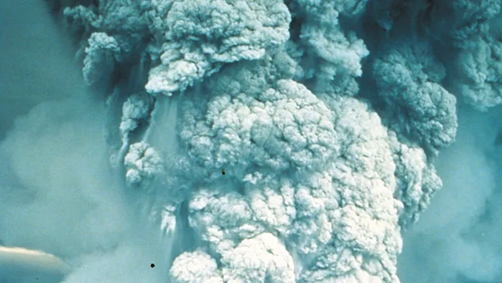
Hot pressurized magma erupted, and the ash plume reached a towering height of 80,000 feet (15 miles, 24 km), before blanketing the surrounding region. Lahars – mudflows carrying debris from volcanic eruptions – formed rapidly from the melting ice and snow on Mount St. Helens’s flanks. Since 1980, Mount St. Helens has continued to experience periodic earthquakes and volcanic eruptions, but not to the same extent of that seen in 1980.
Sources:
Right to Reproduction
In News
Recently, a draft opinion in the US was released that indicated that a majority of the Supreme Court is ready to overturn Roe v. Wade—the nearly 50-year-old precedent supported by a strong majority of the public that established Americans’ right to an abortion.
What is the Roe v. Wade decision?
- Roe v. Wade was a landmark decision of the U.S. Supreme Court in which the Court ruled that the Constitution of the United States protects a pregnant woman's liberty to choose to have an abortion without excessive government restriction.
- Since the judgement was passed, a debate has continued regarding right to reproduction.
- A few months ago, SC of the USA upheld the validity of the Texas near-total ban on abortion. This appears to have been a watershed moment, as states began passing abortion bans.
- The argument in favour of abortion believes that the choice to terminate an "unborn foetus" lies with the individual and her doctor, while the opposition believes that a foetus is a living being at the moment of conception and argues abortion should be criminalized to protect the life of the unborn foetus.
What does right to reproduction entail?
- Reproductive rights are the rights of individuals to decide whether to reproduce and have reproductive health.
- This may include an individual's right to plan a family, terminate a pregnancy, use contraceptives, learn about sex education in public schools, and gain access to reproductive health services.
- Right of all couples and individuals to decide freely and responsibly the number, spacing and timing of their children.
- It also includes right to information and means to do so, right to highest standard of reproductive health, right to make decisions concerning reproduction free of discrimination, coercion and violence.
- Empirically, Courts have been at the forefront of expanding, protecting, and promoting reproductive rights.
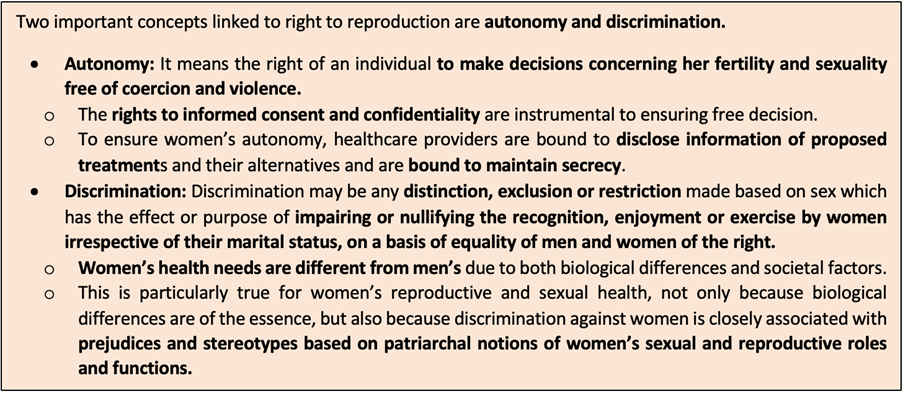
Right to Reproduction in India
- Abortion Rights in India:
- India was one of the foremost countries to develop legal and policy frameworks guaranteeing access to abortion under the Medical Termination of Pregnancy Act, 1971.
- The law was amended in 2021 to make it more comprehensive by increasing the gestation limit for abortions, no upper gestation limit for abortion in case of foetal disability and including termination of unwanted pregnancies caused by contraceptive failure, regardless of their marital status.
- Yet, the law still does not give women the right to get an abortion on demand.
- Section 312 of the Indian Penal Code labels “causing miscarriage” as an offence has not been scrapped yet. The MTP Act is seen as an exception to IPC; that is, abortion is available only under the conditions specified in it.
- Family Planning and use of contraceptive measures:
- India’s efforts towards family planning are focused on population control measures rather than being a rights-based approach.
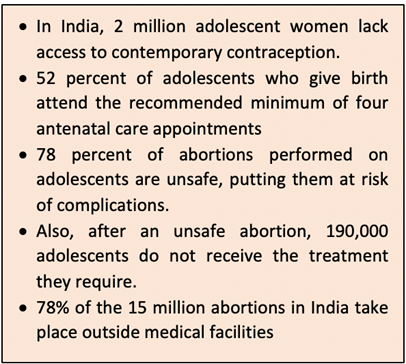
-
- India was the first country in the world to have launched a National Programme for Family Planning in 1952.
- Succeeding policies include the National Population Policy 2000, National Health Policy 2017, and National Rural Health Mission.
- Sexual Health Education:
- In India, while talking about sex education, much emphasis is given on teenage pregnancy and HIV/AIDS infection.
- In 2007, sex education was introduced by the National Council for Education, Research and Training in the curriculum under the ‘Adolescent Education Program’ (AEP) in collaboration with National AIDS Control Organization (NACO) and United Nations Children’s Fund (UNICEF).
- However, sex education was widely opposed and removed in states like Gujarat, Maharashtra, Madhya Pradesh and Goa.
- The current structure of national programmes in India includes FLE introduced in the Indian curriculum by the Ministry of Human Resource and Development and National AIDS Control Organization, but it lacks a comprehensive coverage of all topics related to it.
International Efforts
- In 1979, the Convention on the Elimination of All Forms of Discrimination against Women was adopted by the United Nations General Assembly.
- The International Conference on Population and Development (ICPD) held in Cairo in 1994 recognised women’s rights to reproductive and sexual health as being key to women’s health.
- The Beijing Declaration was a resolution adopted by the UN in 1995. One of the critical areas of concern identified at the Beijing Conference referred to inequalities and inadequacies in access to health care and related services, adopting a life cycle approach to women’s health from infancy to old age.
- The SDGs of the 2030 Agenda calls upon all countries to end discrimination and violence against women and girls and work towards elimination of practices like forced and early marriage, and genital mutilation.
- Goal 5. Achieve gender equality and empower all women and girls: SDG 5 that has targets relating to sexual and reproductive health and reproductive rights.
- Goal 3. Ensure healthy lives and promote well-being for all at all ages: SDG 3 on health is aimed to ensure universal access to sexual and reproductive health-care services.
Way forward:
- Reproductive capacity must be transformed from an object of population control to a matter of individual’s empowerment to exercise personal autonomy in relation to their sexual and reproductive health within their social, economic and political contexts.
- Women’s health in general, and their sexual and reproductive health, are determined not only by their access to health services but by their status in society and pervasive gender discrimination, which needs to be addressed.
- For India, targeted investment in adolescent sexual and reproductive health is critical for reducing unwanted pregnancies, unsafe abortions, unplanned deliveries, and maternal mortality, as well as safeguarding young people’s bodily autonomy and well-being.
- To prevent reproductive coercion and provide equitable access to services, a rights-based policy framework is required in addition to full investment.
- With technological advances, right to reproduction in modern times will include issues like genetic engineering and genetic testing. The rights and rules regarding such issues should be discussed on the global forum.
Question: Discuss the provisions related to right to reproduction in India
Sources:
- Rights to Sexual and Reproductive Health - the ICPD and the Convention on the Elimination of All Forms of Discrimination Against Women (UN Document)
- Reproductive Rights for Women in India
- Sexual and reproductive health and rightsq
- What are Reproductive Rights?
- Private reproduction decisions like IVF and contraception could be at risk if the Supreme Court overturns Roe v. Wade, experts say
- Sexual and Reproductive Health Rights (SRHR) in India [Part 1]
- Sexual and Reproductive Health Rights (SRHR) in India [Part 2]
- Divided States of America: Roe v Wade is ‘precursor to larger struggles’
- India’s amended abortion law still gives doctors, not women, the final say in terminating pregnancy
- Family Planning- MOHFW
- Adolescent sex education in India: Current perspectives
- 5 FACTS ABOUT SEX EDUCATION IN INDIA
- Why Is Sex Or Sexuality Education In Indian Schools Still A Taboo?
- REPORT TO THE UNITED NATIONS HUMAN RIGHTS COUNCIL FOR THE UNIVERSAL PERIODIC REVIEW OF THE REPUBLIC OF INDIA
The ‘Death Shadow’ Dinosaur
This is a simulated image of a ‘Maip Macrothorax’ or the Death Shadow Dinosaur. Maip represented the shadow that death leaves in its wake, hence the name. Remains of this dinosaur has been announced recently by Argentine palaeontologists. The Maip Macrothroax is a 70 million-year-old apex predator that weighed up to six tons and measured around nine to ten metres in length.
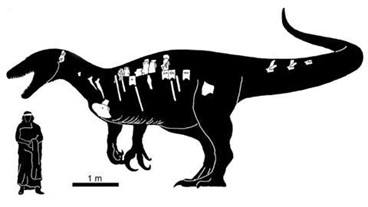
These incredible dimensions make this fearsome mega-raptor larger than any other during the Cretaceous period that spanned 145 to 66 million years ago. The Maip Macrothorax derives its name from Maip — an "evil" mythological figure of Patagonia's indigenous Aonikenk people. ‘Macrothorax’ refers to the enormous expanse of the creature's chest cavity, which was some 1.2 meters (3.9 feet) wide. The creature probably fed on smaller dinosaurs that it ripped to shreds with its sharp 16 inch talon. The megaraptors were a group of flesh-eating giants that roamed the expanses of what would be considered present-day South America.
Source:
Dollarisation
- Context: Officials of the RBI have recently stated that Cryptocurrencies could lead to "dollarization" of a part of the economy.
- Dollarization is a term used when the U.S. dollar is used in addition to or instead of the domestic currency of a country. Therefore, it is an example of currency substitution.
- Dollarization usually happens when a country’s own currency loses its usefulness as a medium of exchange, due to hyperinflation or instability.

- Eg: Countries which have been victims of hyperinflation like Bolivia have become dollarised, with over 80% of the currency in use being dollars.
- However, disadvantages of Dollarization is that it can directly influence an economy, including its right to administer monetary policy and any form of exchange rate regime. (E.g.: it will undermine the RBI's capacity to determine monetary policy and regulate the monetary system of the country).
- Further, the central bank loses its ability to collect 'seigniorage', the profit gained from issuing coinage.
- As cryptocurrencies are dollar-denominated and also issued by foreign private entities, it could lead to dollarisation. Also, cryptocurrencies have the potential to become a medium of exchange and replace the rupee in financial transactions both domestic and cross-border — thereby replacing a part of the Indian monetary system.
- Backing these reasons, the Indian Finance Ministry imposed a 30% crypto tax, without officially ‘allowing’ it in India, in the Union Budget of 2022.
Source:
- Understanding Dollarization
- Dollarisation - why is it worrying the Indian central bank and how cryptos can trigger it
- Cryptocurrencies can lead to ‘dollarisation’ of economy, against sovereign interest: RBI officials
Image source:
National Data & Analytics Platform
- Context: NITI Aayog has recently launched the National Data & Analytics Platform (NDAP) for open public use.
- NDAP is a user-friendly web platform that aggregates and hosts datasets from across India’s vast statistical infrastructure.
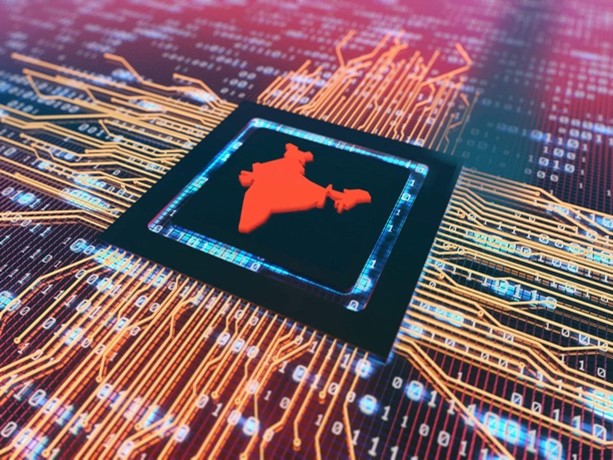
- It hosts foundational datasets from various government agencies, presents them coherently, and provides tools for analytics and visualization.
- Its features include:
- Accessibility: This is ensured by hosting data in clean, machine-readable formats, ensuring datasets are interoperable, and providing detailed documentation on the contents of each dataset.
- Quality: Datasets on the platform are required to meet a minimum data quality standard that is defined using NDAP’s in-house 5-star rating framework.
- Interoperable: Datasets on NDAP are made interoperable by mapping them to a common set of geographical and temporal identifiers which enables users to merge datasets from different sectors and sources for easier cross-sectoral analysis.
- Interactive: NDAP users can create flexible tables and visualizations for easy exploratory analysis using the platform’s in-built analysis tools.
- User-centricity: NDAP hosts use-case relevant datasets, ensuring that the platform experience is user friendly, and regularly soliciting and incorporating user feedback.
- Hence, NDAP is critical to aid India’s progress by promoting data-driven disclosure, decision making and ensuring availability of data connecting till the last mile.
Source:
- NITI Aayog launches national data analytics platform NDAP for public use
- National Data and Analytics Platform
Image source:
Iron Tools- Historical significance & Relevance in Tamil Nadu
- Context: A recent archaeological report has stated that the carbon dating of excavated finds in Tamil Nadu has pushed the evidence of iron being used in India back to 4,200 years ago.
- The Archaeological excavations in Mayiladumparai, near Krishnagiri in Tamil Nadu, have found that the date of iron artefacts unearthed ‘ranges from 2172 BCE to 1615 BCE.
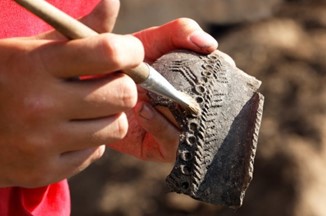
- Hence, through the findings, it has been established that Tamils who lived 4200 years ago were aware of iron.
- Dense forests were converted into fertile lands only after humankind began realising the use of iron. This answers questions relating to the start of agricultural activity in Tamil Nadu.
- Also, are the following observation:
- Iron appeared in Tamil Nadu as early as 220 BC.
- The late Neolithic phase was identified before 200 BCE.
- Black redware was in use the late Neolithic phase itself, in contrast to the wider belief that they were introduced in Iron age.
- The earliest Iron age site in Tamilnadu so far was 1500 BCE old, while all other such sites in the country were beyond 2000 BCE.
- Iron is not known to have been used in the Indus Valley, from where the use of copper in India is said to have originated (1500 BCE).
- When iron technology was invented, it led to the production of agricultural tools and weapons, leading to production required for a civilisation ahead of economic and cultural progress.
Source:
- Iron Age in Tamil Nadu dates back 4,200 years, ‘oldest in India’
- Tamils knew use of iron 4,000 years ago, archaeological findings show Read more at:
Image source:
HS200 rocket booster
- Context:ISRO has successfully carried out the static test of the human-rated solid rocket booster HS200 solid rocket booster.
- HS200 solid rocket booster is a key component for the Gaganyaan manned mission programme.
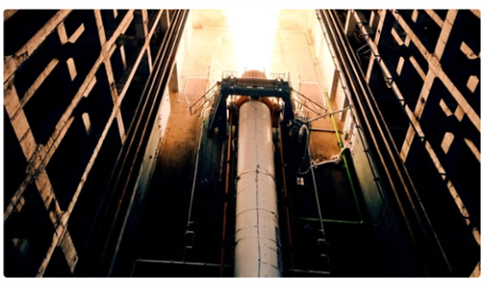
- According to NASA, “Human ratingis a thorough process that consists of many variables being taken into account to safely design, build and launch a crewed spacecraft and return that spacecraft, and its crew safely to the earth''.
- HS200 rocket boosteris the human-rated version of the S200 rocket booster of GSLV Mk III satellite launch vehicle, popularly known as LVM3.
- It is a 20-metre-long booster with a diameter of 3.2 metres and is theworld’s second largest operational booster using solid propellants.
- Design and development of the HS200 booster were completed atVikram Sarabhai Space Centre (VSSC), Thiruvananthapuram, and propellant castingwas completed at SDSC, Sriharikota.
- Gaganyaanis a crewed orbital spacecraft that is expected to take three astronauts to space for a period of seven days, by the end of 2022 or early 2023.
- With this, Indiawill be the fourth nation to send astronauts to space after the United States, China and Russia.
Source:
- ISRO successfully tests the human rated HS200 rocket booster for the Gaganyaan mission
- Gaganyaan- All you need to know about India's first manned space mission
Image source:
How to tackle the inflation spiral: Indian Express
Essence: World is currently experiencing macroeconomic uncertainties. It is reflected in increasing debt, deficits and inflation. Persistent high level of inflation is the result of fiscal and monetary expansion that happened during the pandemic. Situation is being amplified by ongoing Ukraine-Russia conflict which has disrupted the supply chain of many essential goods.
Domestic and external debt stock also increased sharply during the pandemic. Sri Lanka is its latest victim. Thankfully, India’s external debt stock to GDP ratio has remained stable at around 20 per cent.
Though central banks of many countries have raised interest rates to deal with rising inflation, it is expected to have a slower effect. The global economy needs coordinated policy for monetary tightening and fiscal sustainability.
Why should you read this article?
- To understand the extent of global macroeconomic problems and reasons responsible for it.
- To understand steps which should be taken to deal with it.
Source:
The technical higher education market dissected: The Hindu
Essence: The author speaks about the expansion of technical education, its economics and role of AICTE in supervising technical education in India. In the period 1961-91, the growth in technical institutions was government led and post 1991 has seen growth in private institutions.
In the current times, supply far exceeds the demand for technical higher education, probably in the hope that the supply would create its own demand. Thus, many technical institutions have been saddled with sunk costs due to their inability to fill their sanctioned seats. Their capacity utilisation has been falling.
On the other hand, Premier institutes maintain their finances by regulating the intake capacity, thereby creating a demand and asking for premium fees. This helps them in maintaining quality education (Veblen Effect- what is expensive is perceived to be excellent).
While the AICTE must step to regulate the higher and technical education, it could provide for norms and guidelines for fixing education fees rather than prescribing the lower and upper limit. It will empower the state level committees to fix the price band and provide a relief to students in institutes which aren’t maintaining quality provision of education.
Why should you read this article?
- To know about the proliferation of higher technical education institutions in India.
- To understand the intention of AICTE and market tendencies.
Source:
A concerted effort in re-imagining museums: The Hindu
Essence: On the occasion of International Day of Museum (18 May), the government has exempted the entry fees for all ministry of culture museum. India, home to over 1000 museum, has evolved the way it perceives museums as a showcase of India’s rich culture and heritage. Now, museum-space approach has transformed to culture-space approach where the artifacts are being placed at the specific cultural location to which the entity belongs. This would act as a reflection of day-to-day life of society rather than a way to preserve past heritage.
Secondly, the museum would be built for specific purpose, rather than general purpose. Having museum on Buddha, armory museum or art gallery, science city, tribal museum, etc. are such examples. Thirdly, the government has taken the approach to break the silos and integrate museum beyond ministry of culture to the domain of all ministry and technology. Rail museum, textile museum, science museum is associated with respective ministries. Similarly, providing immersive experience through artificial intelligence, augmented reality, interactive features/models and storytelling would help in making Indian museum state of the art. Reimagining Indian museums is the concept which would pave way to adopt the best practices of our culture, and feel humbled by the richness of India’s past.
Why should you read this article?
- To know the evolution of Indian museum over the years.
- To understand the mandate of the government in the field of art and culture.
Source:
Circles of Safety
Background
In India, the societal fabric is shredded by child sexual assault. According to a government research done in 2007, only 3% of the 53% of children who are sexually assaulted before their 18th birthday confess this abuse to a parent or adult.
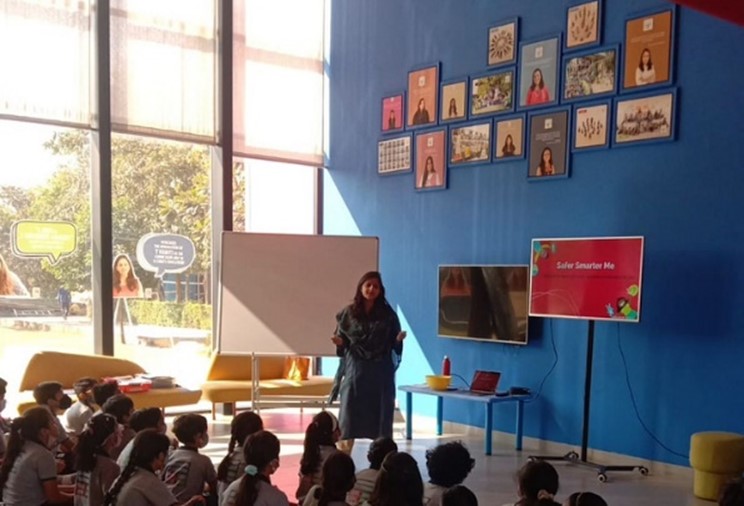
Fight against Child Abuse:
- Anuja Amin, 37, launched Circles of Safety in 2015 in an effort to educate the community and be a voice for sexually abused children.
- She delivers workshops in schools through the platform, assisting parents and employees in embracing personal safety discussions.
- As part of the National India Toy Fair, she and her team designed two games for children aged 5-18. The idea was for adults and children to communicate important safety messages while being approachable.
- These activities are designed for children aged 4-8 and include activity sheets and worksheets to assist children in developing gross motor skills and identifying their adult safety network.
Quote: “What distresses me at times is that I meet a lot of people in their 40's, 50's, 60's, who still say they're a victim of child abuse.”-Dave Pelzer
Source:
Share the article
Get Latest Updates on Offers, Event dates, and free Mentorship sessions.

Get in touch with our Expert Academic Counsellors 👋
FAQs
UPSC Daily Current Affairs focuses on learning current events on a daily basis. An aspirant needs to study regular and updated information about current events, news, and relevant topics that are important for UPSC aspirants. It covers national and international affairs, government policies, socio-economic issues, science and technology advancements, and more.
UPSC Daily Current Affairs provides aspirants with a concise and comprehensive overview of the latest happenings and developments across various fields. It helps aspirants stay updated with current affairs and provides them with valuable insights and analysis, which are essential for answering questions in the UPSC examinations. It enhances their knowledge, analytical skills, and ability to connect current affairs with the UPSC syllabus.
UPSC Daily Current Affairs covers a wide range of topics, including politics, economics, science and technology, environment, social issues, governance, international relations, and more. It offers news summaries, in-depth analyses, editorials, opinion pieces, and relevant study materials. It also provides practice questions and quizzes to help aspirants test their understanding of current affairs.
Edukemy's UPSC Daily Current Affairs can be accessed through:
- UPSC Daily Current Affairs can be accessed through Current Affairs tab at the top of the Main Page of Edukemy.
- Edukemy Mobile app: The Daily Current Affairs can also be access through Edukemy Mobile App.
- Social media: Follow Edukemy’s official social media accounts or pages that provide UPSC Daily Current Affairs updates, including Facebook, Twitter, or Telegram channels.



